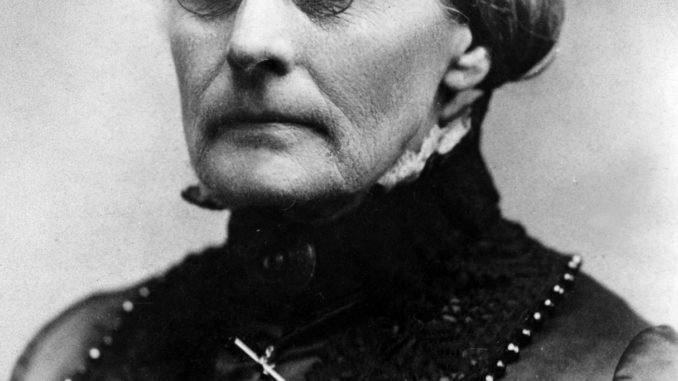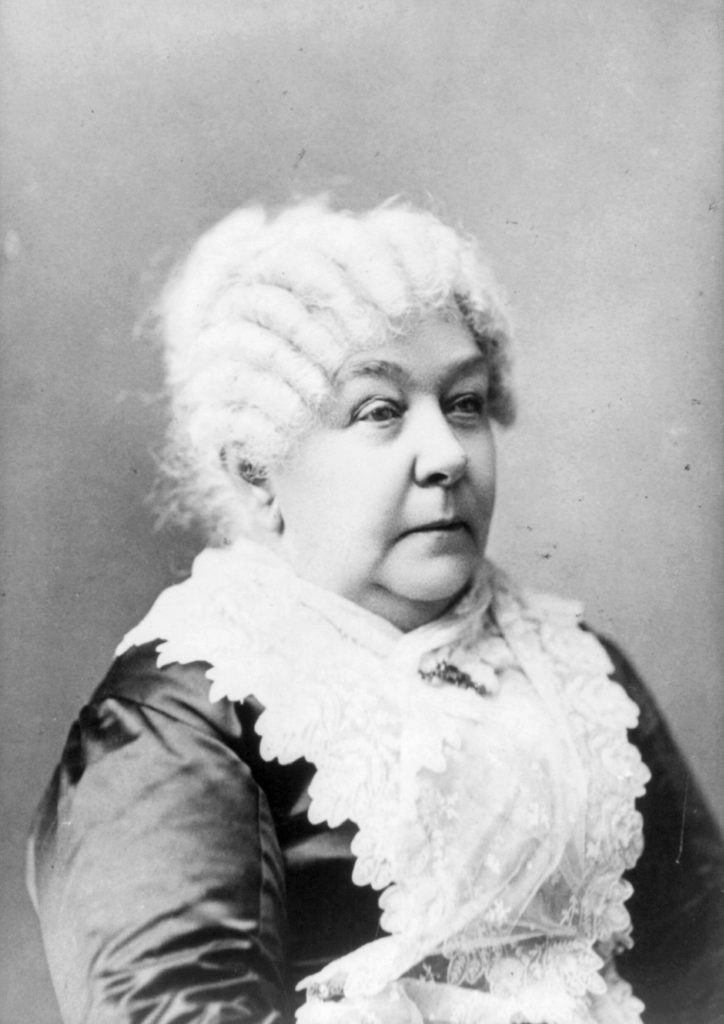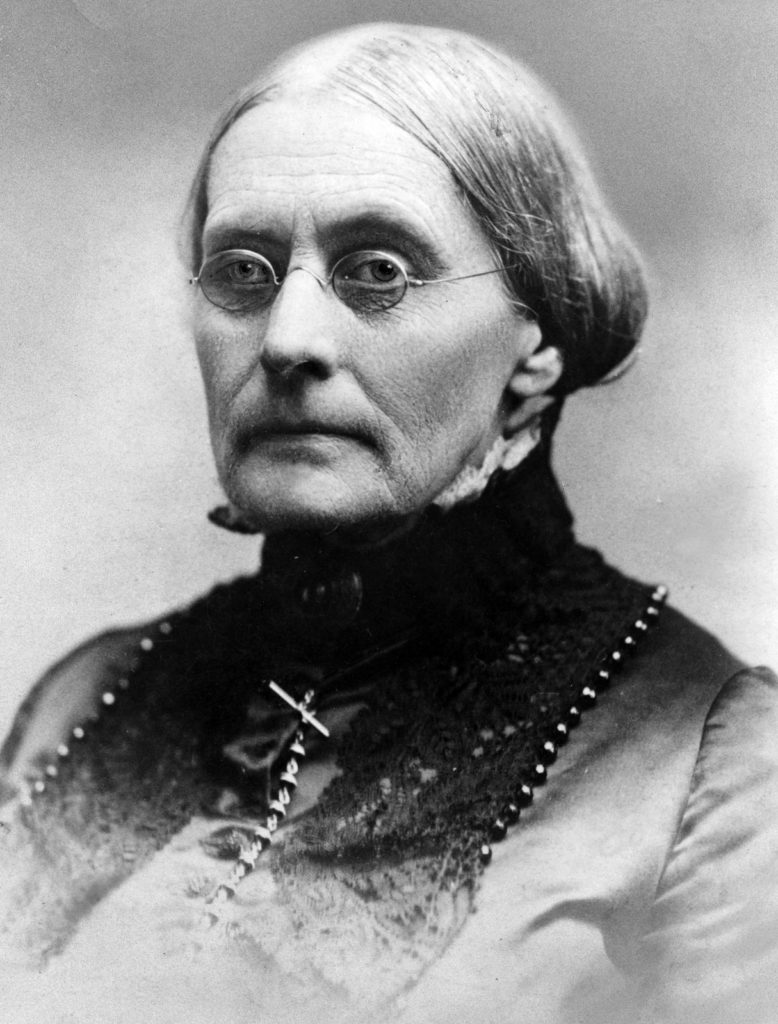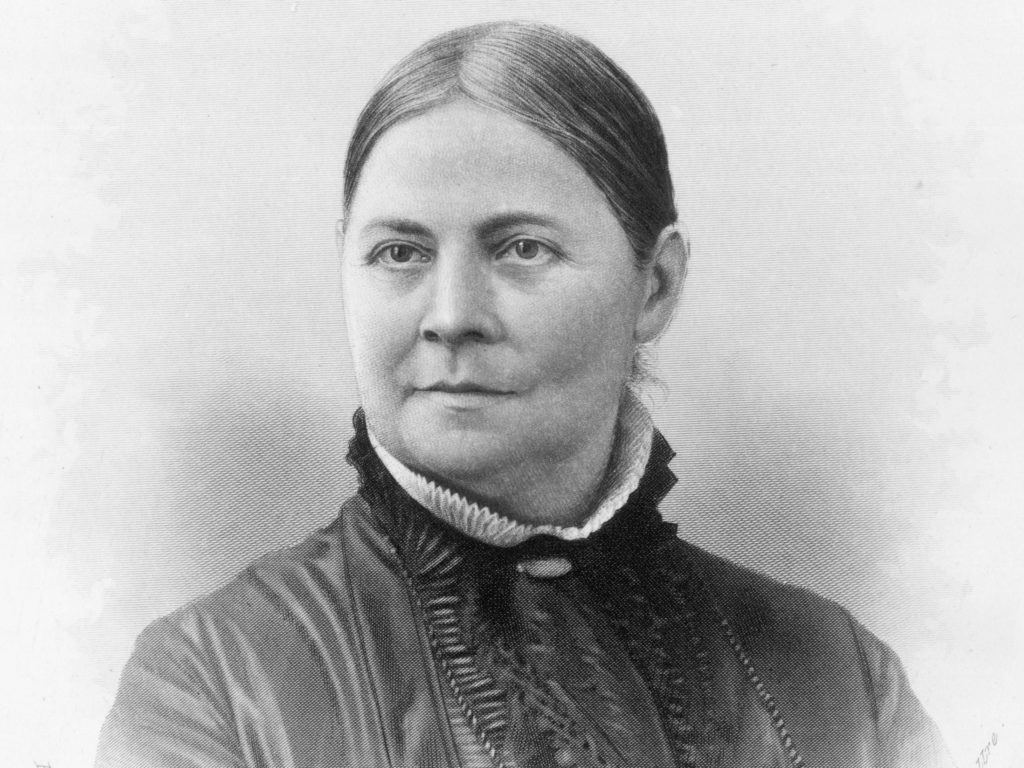
Cherry Sokoloski
The women’s suffrage movement was not immune to nasty episodes of racial prejudice. Even though women fought hard to end slavery, they still had some blind spots when it came to racial equality.
Like other heroes (and the rest of us), they were not without flaws.
Most of the early suffragists came to women’s rights through either the abolitionist or temperance movements. Some were hired by the American Antislavery Society to be public speakers for the abolition of slavery. These activists became acquainted with women in the suffrage movement, and gradually their speeches came to criticize not only the evils of slavery but also the oppression of women.
During the Civil War, women pushed hard for passage of the 13th Amendment, which ended slavery. Traveling throughout the country, they collected more than 400,000 signatures on a petition supporting the amendment. The Civil War ended in April of 1865, and by the end of the year the 13th Amendment had been ratified.
Many people believed that this work had earned women the right to vote.
But following the Civil War, women activists came up against an unexpected roadblock. Slaves had been freed, and the overwhelming concern of social activists (in the North, at least) was to give former slaves more rights. This movement led to the adoption of both the 14th and 15th amendments.
The 14th Amendment (ratified in 1868) granted citizenship to all male persons born or naturalized in the United States, including former slaves.
The 15th Amendment went further by defining citizens’ right to vote. It prohibits both federal or state governments from denying a citizen the right to vote based on “race, color or previous condition of servitude.” By the definition of “citizen” in the 14th Amendment, women were again excluded.

One can only imagine the anger and disappointment these two amendments caused among suffragists who had fought hard for slaves to be freed, only to have their own aspirations ignored. Elizabeth Cady Stanton and Susan B. Anthony pressed hard to have women of all races included in the 15th Amendment, but they were unsuccessful.

Instead, the high emotions caused a split in the women’s movement. Some believed that African-American men needed the vote immediately and that women’s turn would come soon. Suffragist leader Lucy Stone, at first outraged by the 15th Amendment, came to accept the oft-repeated argument of Frederick Douglass: “This is the Negro’s hour.” Stone and her followers were willing to wait for the woman’s hour and to support measures that improved the lives of black men.

Stanton and Anthony did not want to wait, and Stanton actually worked against the ratification of the 15th Amendment. Unfortunately, she used both racist and elitist language in her arguments, saying the amendment would make the legislators’ wives and mothers “the political inferiors of unlettered and unwashed ditch-diggers and boot-blacks.”
Stanton’s racist attitudes appalled many suffragists as well as other reformers. Men who had been staunch supporters of women’s suffrage before were adamant: the women must wait. Besides being angry with Stanton, they feared that including women in the 15th Amendment would scuttle all hopes of passage.
So, in 1870, the Fifteenth Amendment was ratified, giving black men the right to vote. Women would indeed have to wait – another 50 years.
But that didn’t mean they stopped trying. After women were excluded from the 15th Amendment, Stanton and Anthony wrote their own amendment, modeled on the 15th but including women. They lobbied hard for it in the 1870s, and it was first introduced in Congress in 1878.
Meanwhile, the split in the movement led to the formation of two organizations. In 1869, Anthony and Stanton formed the National Woman Suffrage Association, which was more radical at that time, while Stone founded the American Woman Suffrage Association. They would remain divided until 1890, when women of the next generation, led by Lucy Stone’s daughter Alice, agreed they would have more success working together again. The new organization was called the National American Woman Suffrage Association.
The suffrage organizations included northern and southern women in their ranks. Sadly, the leaders sometimes excluded black women from membership in order to placate their southern sisters. By the 1910s, some white suffragists went further: they argued that the only way they could win passage of the 19th Amendment was to focus on voting rights for white women only.
This exclusion of black women seems ironic, since, in earlier years, white women activists were also denied a place and a voice in reform movements such as abolition and temperance, because of their sex. Those women had to form their own organizations. In the suffrage movement, black women who were denied a voice because of their skin color did the same.
While there were many black women suffragists who fought bravely for the right to vote, they have largely been ignored by history. Next month, we will look at their contributions to the women’s suffrage movement.
Source: Votes for Women by Winifred Conkling, 2018
Support Northern Colorado Journalism
Show your support for North Forty News by helping us produce more content. It's a kind and simple gesture that will help us continue to bring more content to you.
BONUS - Donors get a link in their receipt to sign up for our once-per-week instant text messaging alert. Get your e-copy of North Forty News the moment it is released!
Click to Donate
